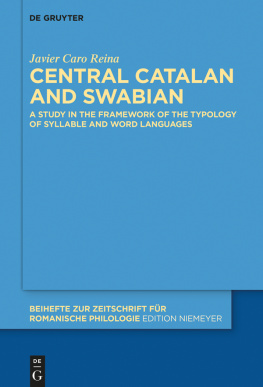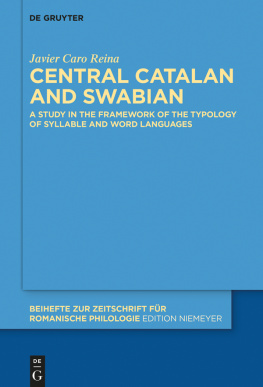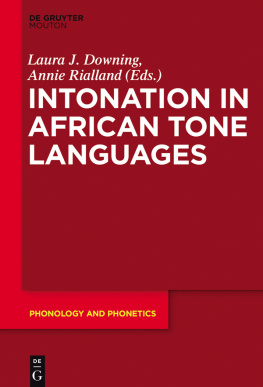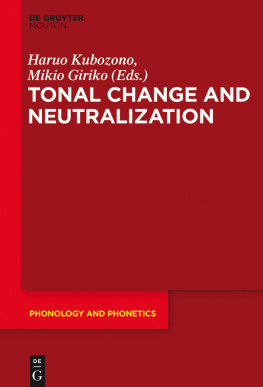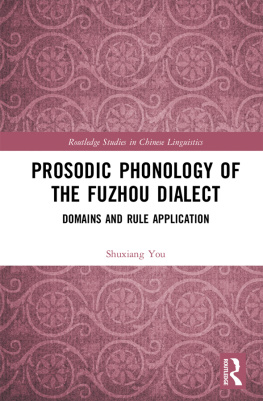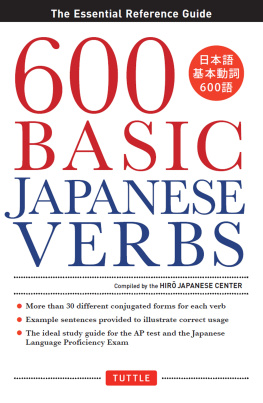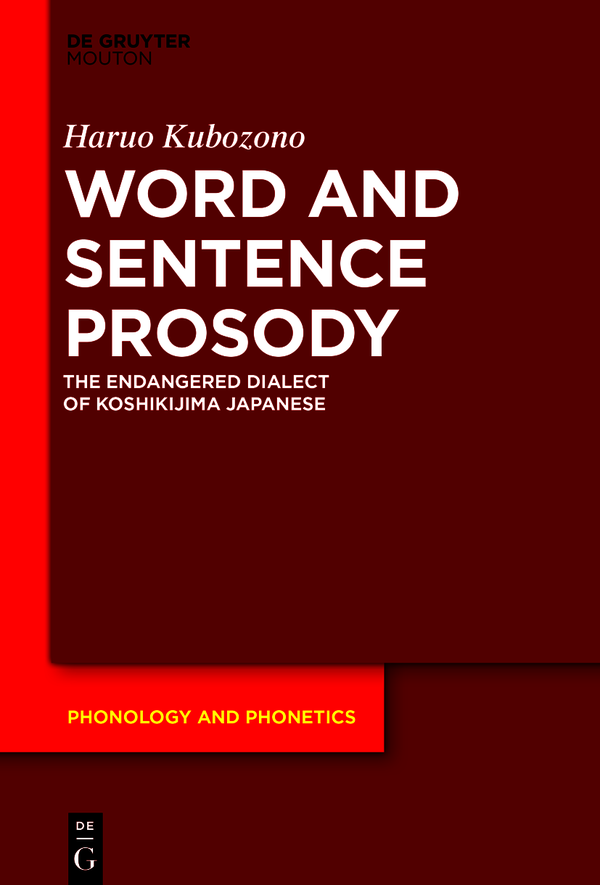Phonology and Phonetics
Edited by
Aditi Lahiri
Volume
ISBN 9783110735055
e-ISBN (PDF) 9783110730074
e-ISBN (EPUB) 9783110730128
Bibliographic information published by the Deutsche Nationalbibliothek
The Deutsche Nationalbibliothek lists this publication in the Deutsche Nationalbibliografie; detailed bibliographic data are available on the Internet at http://dnb.dnb.de.
2023 Walter de Gruyter GmbH, Berlin/Boston
This book is dedicated to the memory of three people who would have been very pleased with its publication:
Yoshiharu Kubozono
19281997
Nobuko Kubozono
19302017
Hiromi Kubozono
19612012
Preface
My research on Japanese prosody started with my work for a doctoral dissertation at the University of Edinburgh back in 19831986. I benefited greatly from the course work that I received in my first year, taught by John Laver, Sandy Hutchison, Alan Kemp, Jody Higgs, Jonathan Harrington, and Steve Hiller. My basis as a phonologist was cultivated in this first year in Edinburgh. After the course work, I was fortunate enough to have Bob Ladd as my supervisor from my second year. His enthusiastic supervision determined the course of my academic life since then. Following his advice, I first worked on word accent and intonation in standard Tokyo Japanese and completed my dissertation on the topic in 1987. This dissertation was the very beginning of my forty-year-long research on Japanese prosody. After coming back to Japan in 1986, I expanded the scope of my research to regional Japanese dialects, including my native dialect of Kagoshima Japanese and its sister dialect, Koshikijima Japanese. The latter is an endangered southern dialect and the main target of this current book. The book as a whole is an outcome of the fieldwork that I have carried out on these southern dialects for the past thirty years or so.
My work on Japanese prosody in the past forty years has been influenced through the discussions and collaborations with many people including, among others, Anne Cutler, Carlos Gussenhoven, Shosuke Haraguchi, Larry Hyman, Junko Ito, Nobuko Kibe, Tomoyuki Kubo, Bob Ladd, Akiko Matsumori, Armin Mester, Tetsuo Nitta, Shinichi Tanaka, Zendo Uwano, and Tim Vance.
Like other books of the same kind, this volume could not have been published without the help of many people and organizations. First, I would like to thank the informants of my fieldwork in Kagoshima and Koshikijima, especially Akiko and Kenji Ando, Setsuko and Yasuo Hanamure, Toshio and Kenichi Kawashima, Hiromi and Nobuko Kubozono, Chiriko and Toshifumi Megurida, Eizo Megurida, and Zenzo Nagata. I would also like to thank Bob Ladd for reviewing my draft very carefully and providing invaluable comments. I should not forget to thank Donna Erickson for checking the English of the draft as well as Ai Mizoguchi and Ryuichi Taki for checking its format. As for funding, my special thanks go to the National Institute for Japanese Language and Linguistics (NINJAL) for their generous support to the collaborative research project, Cross-Linguistic Studies of Japanese Prosody and Grammar, which I have led for the past six years (20162022). Funding from the Japanese government (KAKENHI 19H00530, 20H05617) was also indispensable for my fieldwork. I would also like to express my appreciation to the series editor, Aditi Lahiri, and the publishers editors, Birgit Sievert and Michaela Gbels, for their support and advice at every important phase of this publication.
Finally, I would like to express my sincere thanks to my family Keiko, Yuka, Naoya, and Ayaka for supporting me throughout my academic life.
Haruo Kubozono
List of abbreviations
CA
compound accent
DEC
declarative (particle)
GEN
genitive (particle)
H
high (tone)
H1
primary H tone
H2
secondary H tone
KagJ
Kagoshima Japanese
KosJ
Koshikijima Japanese
L
low (tone)
L1
primary L tone
L2
secondary L tone
mora
N1
first member of compounds
N2
second/final member of compounds
NOM
nominative (particle)
Q
question particle
syllable
SJ
Sino-Japanese
TOP
topic particle
Introduction
About the book
Japanese is one of the languages most extensively studied in linguistics today and is one of the most well-studied non-Indo-European languages. Japanese phonology and prosody are no exceptions to this. Prosodic structures of the language have attracted serious attention in the literature and their studies have contributed to the development of phonological theory. To take a few examples, work on rendaku voicing provided insights into the question of how the lexicon is organized.
While these studies have been very influential in phonology, there are yet many important areas in Japanese phonology and prosody which are worth serious attention from both empirical and theoretical viewpoints. First of all, Japanese is known for its diversity in prosodic organization, with many dialects exhibiting their own prosodic structures and rules (). For example, some dialects such as Tokyo Japanese have a right-dominant compound accent rule whereby the phonological structure of the rightmost element determines the phonological pattern of the entire compound, whereas other dialects have a left-dominant rule that refers to the leftmost member to determine compound accent patterns. This situation is complicated by the existence of hybrid systems like Kyoto Japanese that have both the right-dominant and left-dominant compound rules. Similarly, some dialects are mora-counting dialects, while others are syllable-counting dialects. These two types of systems can and actually do co-exist within a small dialect group of the language. Furthermore, some dialects compute lexical pitch patterns from the left edge of the word, while others compute them from the right edge. These variations in prosodic organization and patterning are worthy of careful and detailed analyses, both empirical and theoretical, and are potentially very important for prosodic research in general.
Secondly, despite this diversity, many regional dialects of Japanese are at the risk of extinction because of the strong influence of standard Tokyo Japanese. Most speakers of the language are bilingual between this standard variety and their own regional dialect today and many young speakers are beginning to lose the basic structures of their native dialect (many of these endangered dialects remain largely undocumented or unanalyzed. It is urgent to document and analyze these endangered dialects before they are completely extinct.
A third area of research that is worth serious attention concerns the relationship between word prosody and sentence prosody, or the interactions between lexical and postlexical tones. While it is often discussed in prosody in general, little is known about their interactions in Tokyo Japanese, much less in regional dialects.
With these backgrounds, this book aims to analyze the diversity of lexical pitch accent systems of Japanese and their relationship with sentence-level prosody such as question and vocative intonation. Specifically, it aims to provide a comprehensive picture of the prosodic organization of Koshikijima Japanese (henceforth, KosJ, for short), a truly endangered dialect with only 2,000 speakers spoken on a remote group of islands in the south of Japan. The analysis of this endangered dialect and its sister dialects including Kagoshima Japanese (henceforth, KagJ) is based on the authors fieldwork over the past thirty years or so. A main focus will be placed on the interactions between word prosody (word accent) and sentence prosody (intonation), the two linguistic areas in which this endangered dialect exhibits particularly different features from its sister dialects and Tokyo Japanese, as well as remarkable regional variations within itself.



